See Spectacular Lunar Mission Images in 3D (Photos)
Seeing in stereoscopic 3D
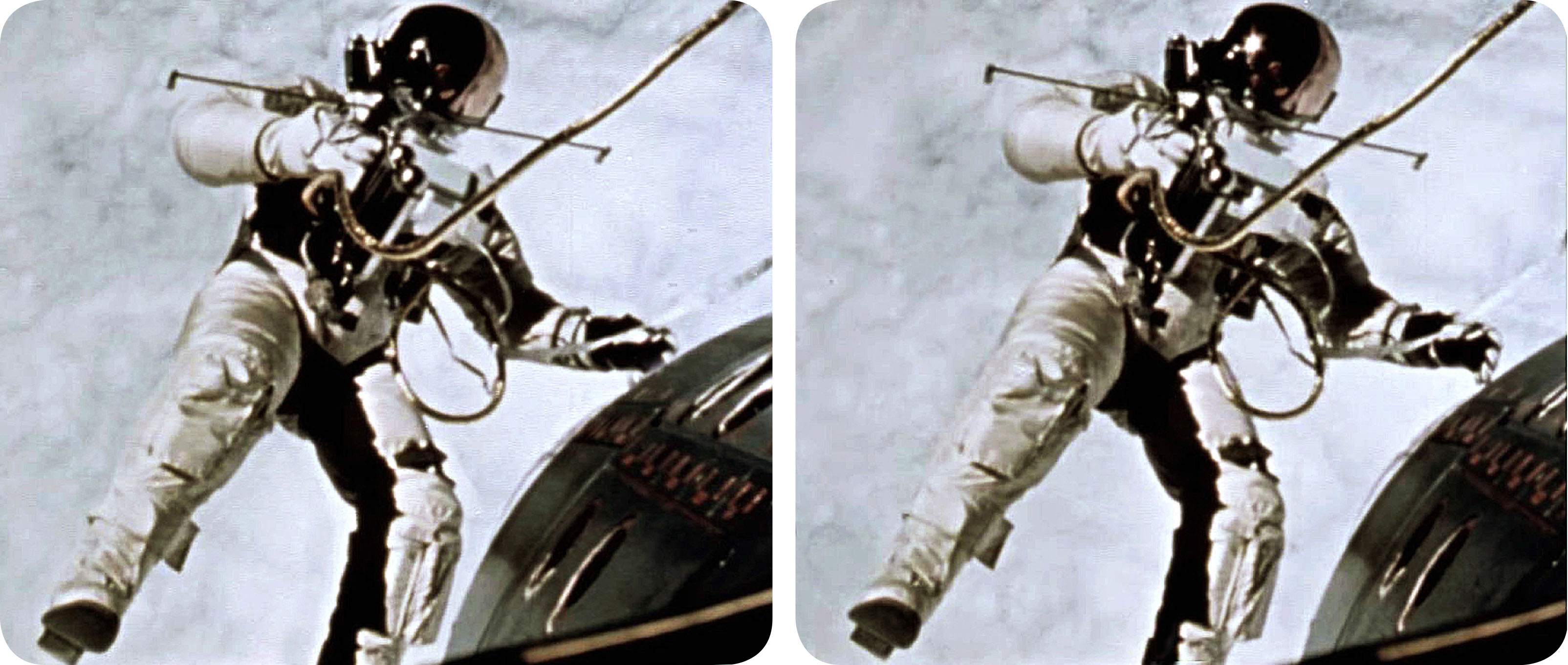
Stereo photos in the new book "Mission Moon 3D: A New Perspective on the Space Race" (MIT Press, 2018) offer a fresh look at the first efforts of the U.S. and the Soviet Union to send human explorers to the moon.
Paired images can be viewed in 3D by looking at the photos and unfocusing the eyes, fixing the gaze toward the center, according to The Stereoscopic Society.
First animal in space
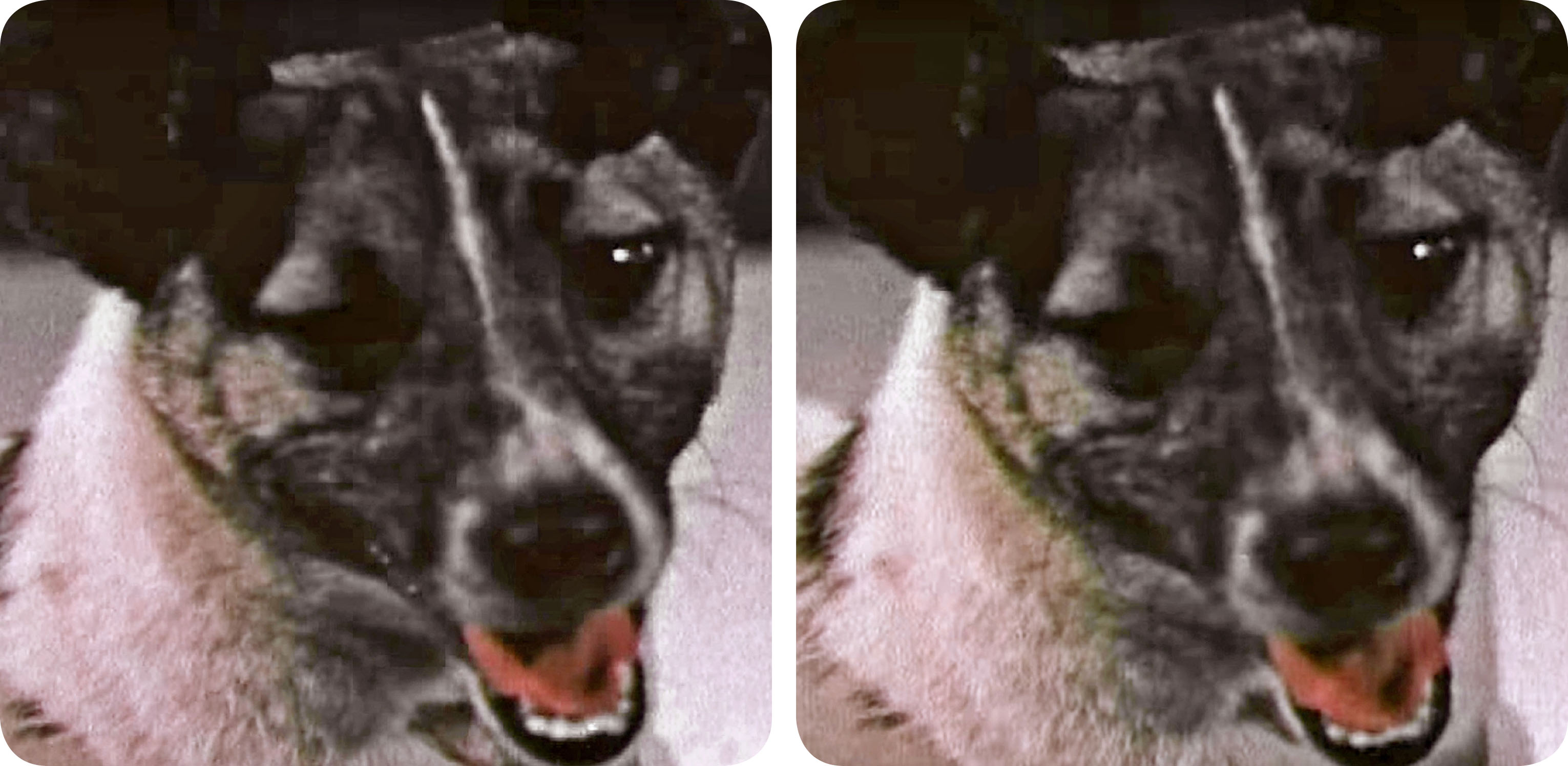
The Russian stray dog Laika became the first animal in space, launched into orbit by the U.S.S.R. on Nov. 3, 1957, just a month after Sputnik 1, to prepare the way for human voyagers. Compassionate voices of protest were raised all over the world, because there was no possibility of safe return to Earth. Indeed, Laika died while imprisoned in her Sputnik 2 capsule.
NASA training event
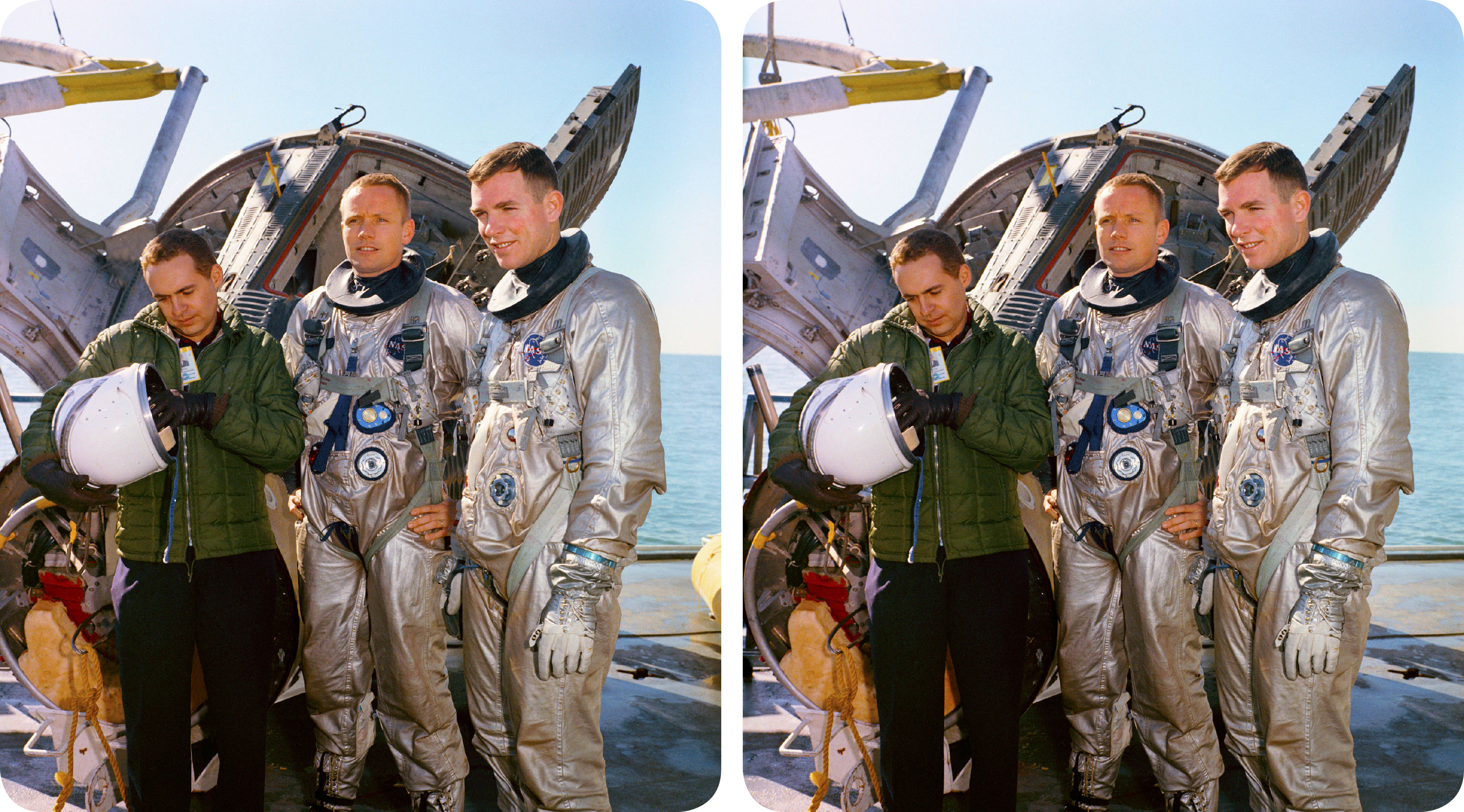
Astronaut and command pilot Neil Armstrong (center), and Dave Scott (right), pilot of the Gemini VIII prime crew, smile in their silver spacesuits during a break from water egress training aboard the NASA Motor Vessel Retriever in the Gulf of Mexico. At left is Dr. Kenneth Beers.
Preparing for a walk
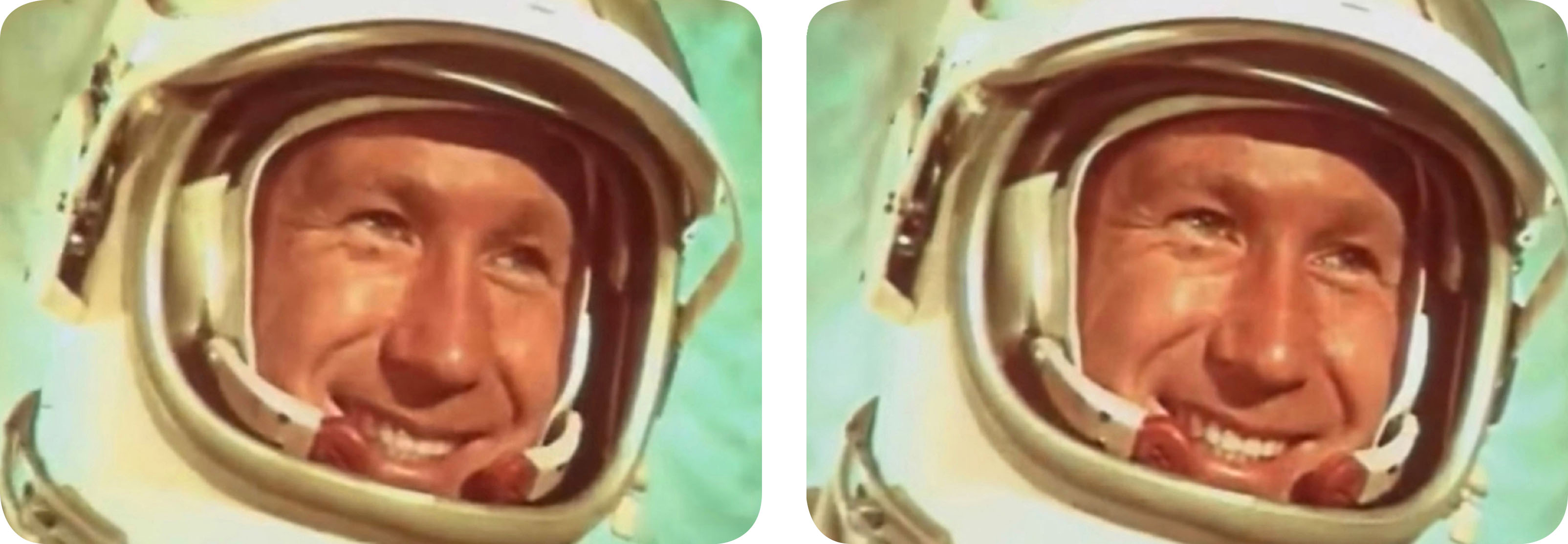
Alexei Leonov during preparations for his historic first spacewalk during the Voskhod 2 mission, smiling inside his helmet, which was equipped with a microphone. This stereo view was created from two screenshots of a 1960s documentary about the first human spacewalk.
First U.S. spacewalk

This photograph of Ed White's first U.S. spacewalk was taken by Commander James McDivitt over a cloud-covered Pacific Ocean. The maneuvering gun — a nitrogen-releasing device used fro propulsion in space — is visible in White's right hand. The visor of his helmet is gold-plated to protect him from the unfiltered rays of the Sun. White is famously quoted as saying: "I'm coming back in...and it's the saddest day of my life."
Deployed for landing
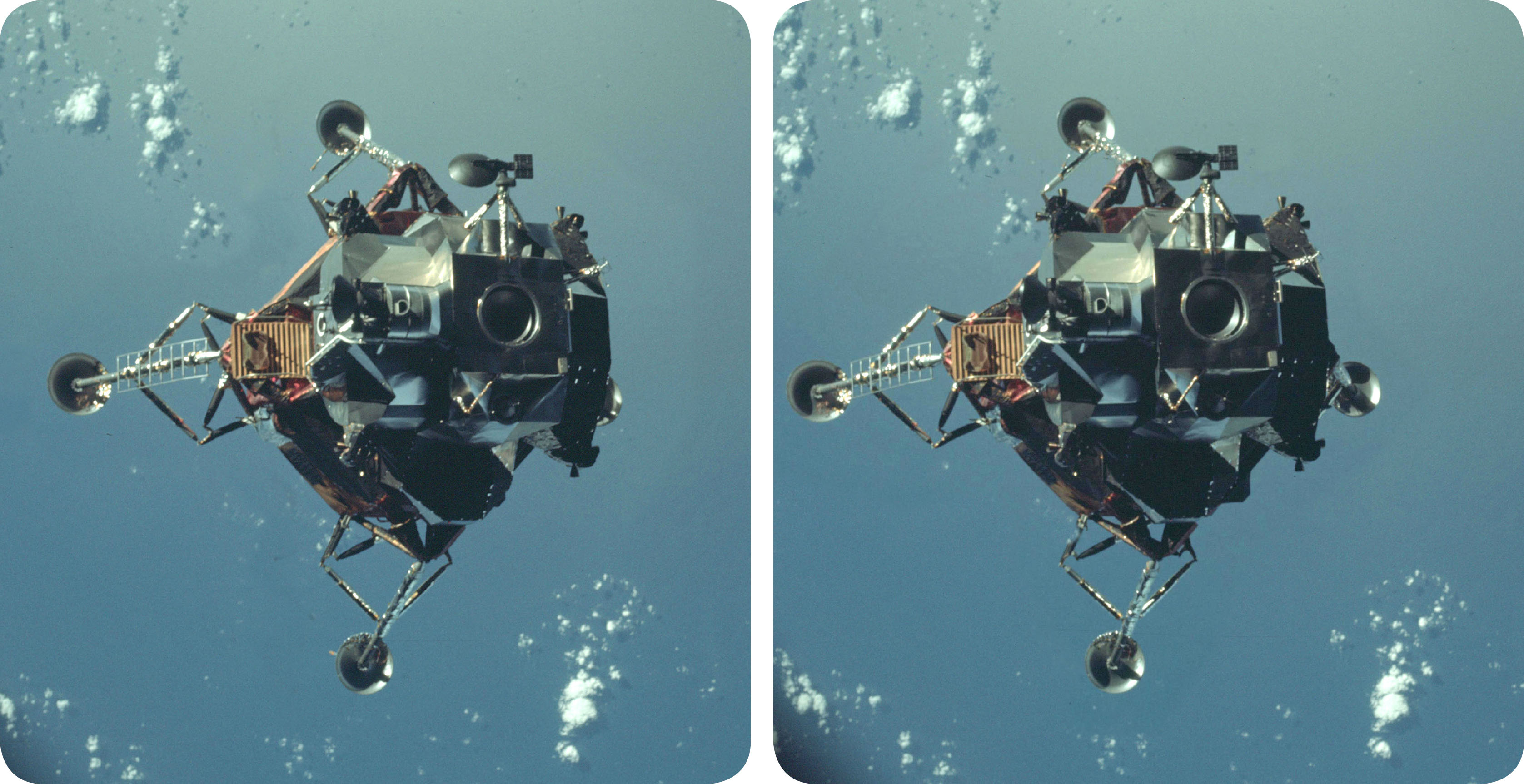
During the Apollo 9 mission, the Lunar Module "Spider" was photographed from the Command Module, "Gumdrop". The landing gear on Spider has been deployed. Inside it are astronauts Jim McDivitt and Rusty Schweickart. Dave Scott remained at the controls of the Command Module.
Get the Space.com Newsletter
Breaking space news, the latest updates on rocket launches, skywatching events and more!
Footprint on the moon
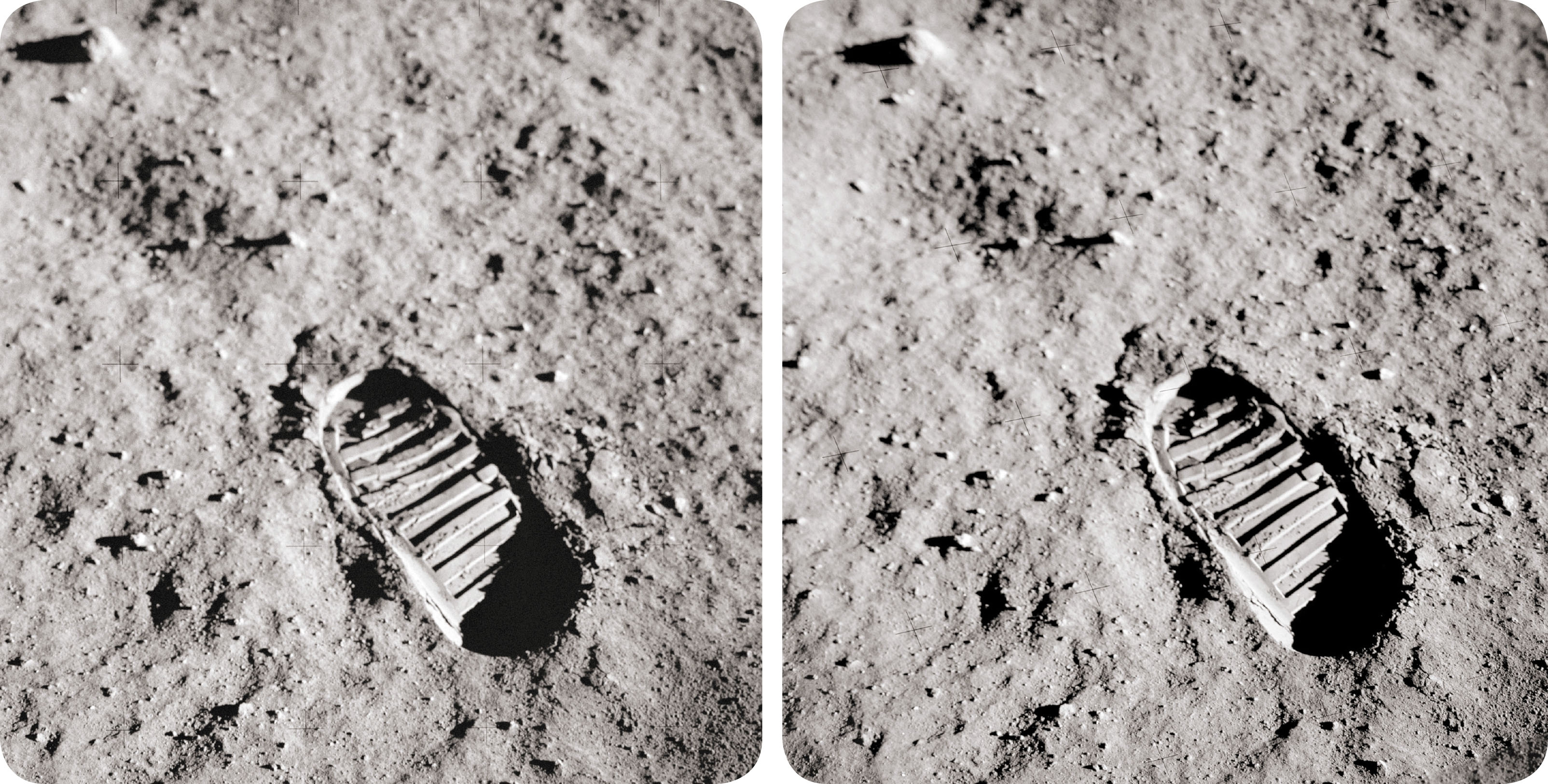
In an iconic image, as part of his soil mechanics experiments, Buzz Aldrin took these pictures of his boot print in the powdery and soft lunar soil. The dry and find-grained dust at Tranquility Base made the boot impression very clear as it compacted under the treaded sole. The image has often been mistaken for a picture of the legendary "first step" taken by Neil Armstrong.
First flag
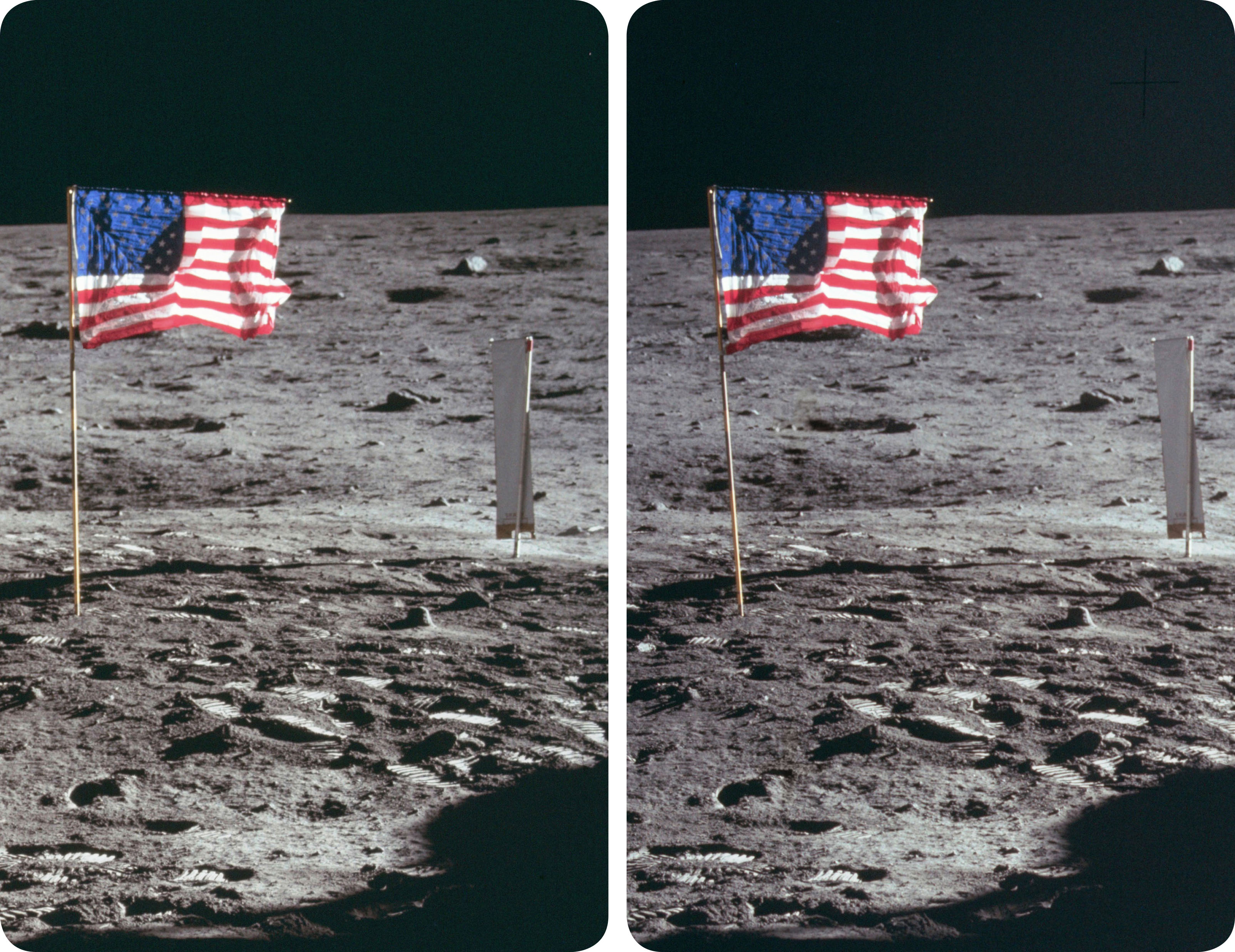
Neil Armstrong and Buzz Aldrin had some difficulty erecting the first flag on the Moon, as the hard lunar soil proved to be difficult to penetrate with the flagstaff! The rod along the flag's top edge did not extend fully, causing the wavy flag to appear to be windblown. The flag planting was symbolic of the first landing on another world, and was not meant to be a territorial claim by the United States.
A lack of support
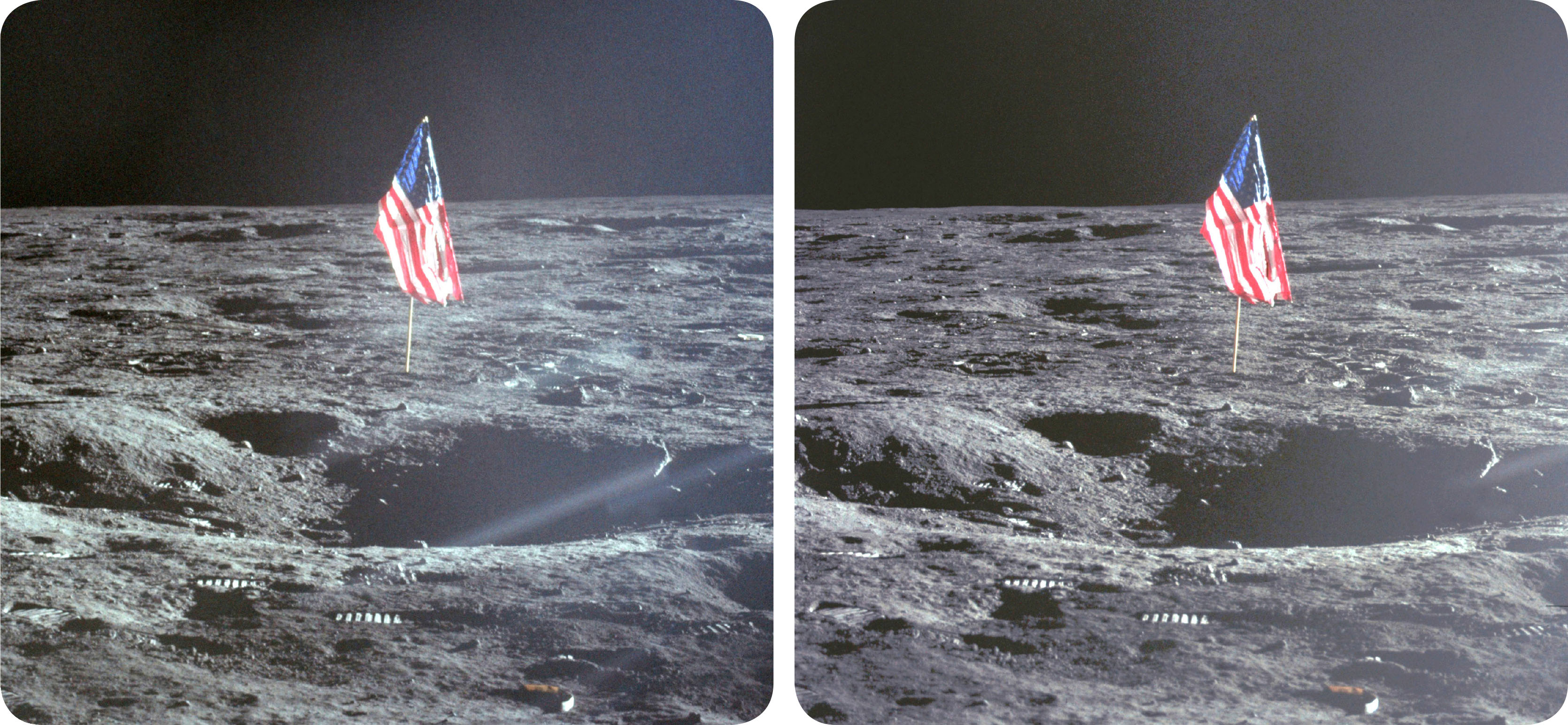
An American flag, erected by the Apollo 12 crew, stands next to a small crater near the lunar module. A quick comparison with the flag planted by Apollo 11 astronauts shows that something went wrong here: The latch mechanism made to hold the crossbar broke, drooping the flag downward. Subsequently, NASA adjusted the supporting hardware in moon-bound flags.
TV from the moon

One of the first tasks for Alan Shepard and Edgar Mitchell at their Fra Mauro Base was to deploy the S-band antenna. This folding dish, spanning 9.75 feet (3 meters) wide and with a tripod standing 4.9 feet (1.5 m) tall, provided an improved television signal for transmission to Earth. The shadow of the lunar module Antares is also visible on the left side of this image, as is part of the flag.
Lunar reflections
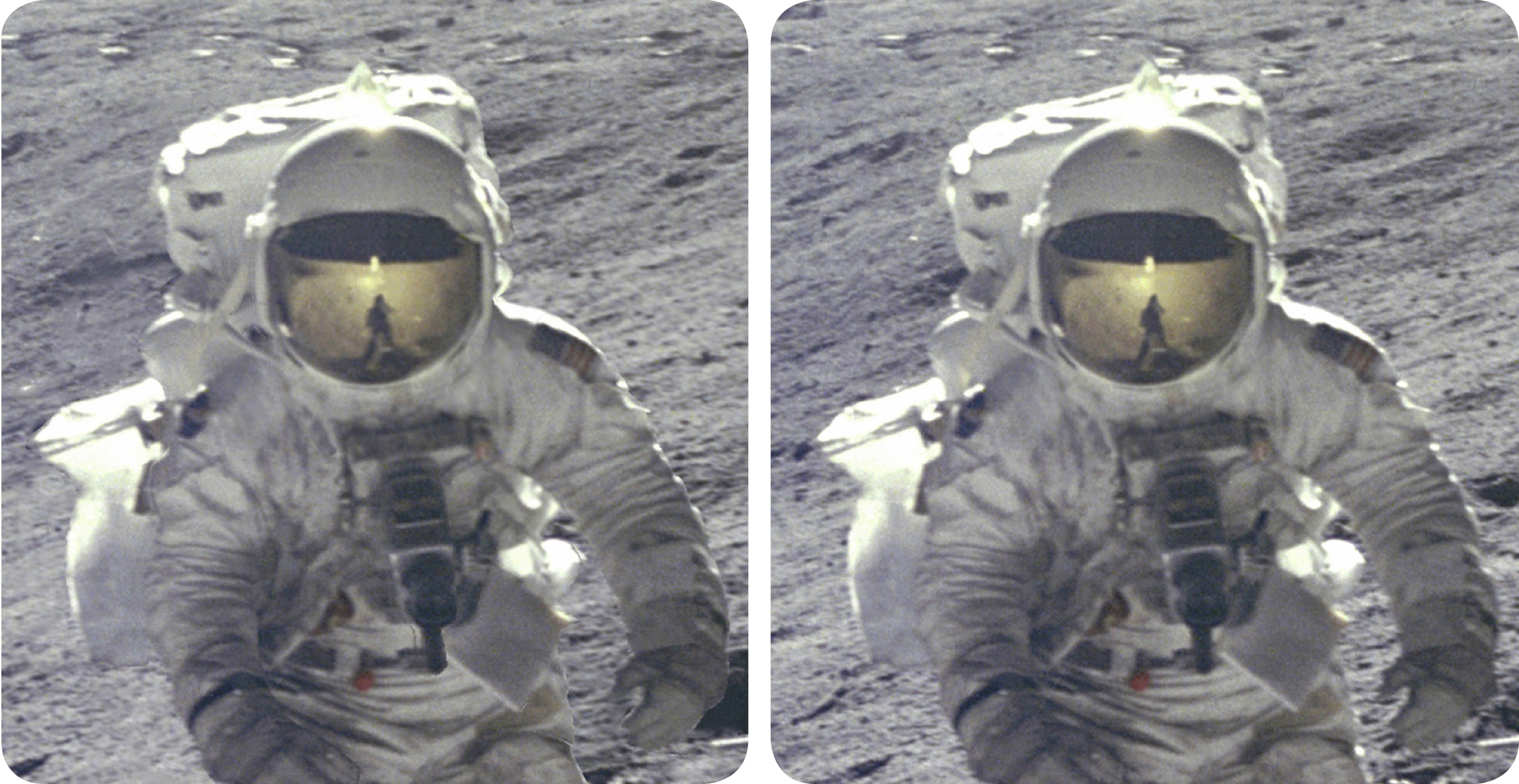
A closer view of Charlie Duke's sample collecting at Plum Crater shows the reflected image of John Young in Charlie's visor. Plum Crater, located about 98 feet (30 meters) northwest of the Orion landing site, stretches 130 feet (40 m) across and measures 33 feet (10 m) deep. Here, Duke's sampling scoop is planted in the ground, and he wears his Hasselblad camera.
Join our Space Forums to keep talking space on the latest missions, night sky and more! And if you have a news tip, correction or comment, let us know at: community@space.com.
For the science geek in everyone, Live Science breaks down the stories behind the most interesting news and photos on the Internet, while also digging up fascinating discoveries that hit on a broad range of fields, from dinosaurs and archaeology to wacky physics and astronomy to health and human behavior. If you want to learn something interesting every day, Live Science is the place for you.










